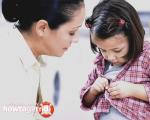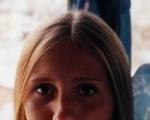Boat neckline. Step by step construction
Dimensions: 42/44 (46/48)
You will need:
200 (300) g melange yarn Cotton Soft Stampe (100% cotton, 180 m/50 g);
knitting needles No. 3 and No. 4.
Double elastic: Use a contrasting thread to cast on half the required stitches;
1st row: using a working thread, knit *1 knit, 1 yarn over,*, repeat from * to *;
2nd row: “knit yarn over, remove 1 st as purl without knitting, thread before work *, repeat from * to *
3rd and subsequent rows: *K1, remove 1 stitch as purl, thread before work*, repeat from * to 9; Unravel the contrasting thread in the finished part.
Facial surface: persons R. - persons p, out. R. -outside P.
Purl stitch: persons R. - purl p, out. R. - persons P.
Knitting density.
Alternation 6 p. persons smooth and 2 r. purl satin stitch, knitting needles No. 4: 18 sts and 24 r. = 10x10 cm.
Description of knitting a pullover with a boat collar:
Back/Front:
On knitting needles No. 3, cast on 135 (145) sts and knit 8 r. double elastic band. Switch to needles No. 4 and knit alternately 6 rows. persons satin stitch and 2 r. purl satin stitch, after 30 (33) cm for sleeves, cast on again on both sides in every 2nd r. 5x8 p. and 0(1) x 10 p. After 51 (56) cm, decrease on both sides in every 2nd r. 5 x 8 p. and 0 (1) x 10 p.;
at the same time, for the neckline, close the middle 26 (30) sts and then knit separately, closing 2 x 5 sts, 1 x 3 sts and 2 x 1 sts along the edges of the neckline. After 56 (61) cm, bind off the remaining loops for each shoulder.
Assembly:
Sew one shoulder seam. For the strap, on knitting needles No. 3, cast on 179 (182) sts along the neckline, knit 6 r. with a double elastic band and close all the loops with a knitted seam. Sew the second shoulder seam. Using knitting needles No. 3, cast on 76 (81) sts along the edge of each sleeve and knit the strips as for the neckline. Sew sleeve seams and side seams.
(Size 46)
A long-sleeved sweater (Fig. 40) is knitted from 650 g of white wool in stockinette stitch. To embroider the ornament you need a little light pink or lilac, dark pink, yellow, purple, light green and dark green yarn. The knitting density horizontally is 2.2 loops per 1 cm, vertically - 3 rows per 1 cm.
The sweater pattern consists of five parts (Fig. 41): a back, two sleeves, a front and a collar.
For knitting backrests cast on 112 stitches in a tight cast and knit 12 rows in stockinette stitch. Then make a 2×1 rib, lowering every 3rd stitch to the starting row and picking it up with a knit stitch. After the elastic band, the back is knitted according to the pattern.
For knitting sleeves cast on 51 stitches in a tight cast and knit 30 rows (10 cm) in stockinette stitch. Make a 2×1 rib, as on the back, and knit 99 rows (33 cm) to the armhole line, adding 1 loop on both sides 9 times after 6 rows and 6 times after 5 rows. Then the okat is knitted, closing the loops according to calculation. Leave loops for the width of the shoulder strap (see pattern) and, adding 1 loop on each side for the seam, knit it. The second sleeve is knitted in a mirror image.
For knitting front cast on 112 loops and knit to the chest line, like the back, but 2 cm longer. The excess along the side seam is placed when sewing the back and front pieces together at chest level. The loops of the armhole, neckline and along the shoulder strap line are closed according to calculation.
For knitting collar cast on 28 stitches with waste thread and, after knitting several rows, knit in stocking stitch 44 cm. Finish knitting with several rows of waste thread.
The details are steamed and embroidered according to the pattern (Fig. 42), taking into account that 1 loop in the pattern is equal in height to 2 rows. Unravel the waste threads and sew the collar with a knitted seam. Sew the parts together. The collar is sewn on using a quilt stitch along the pigtail.
To knit a pullover we will need: thin cotton yarn, stocking and circular knitting needles No. 3.5.
interesting selection for the site 17 excellent openwork models with diagramsBefore starting knitting, take the necessary measurements. The pullover is knitted in the round without seams with raglan sleeves.
Pullover description:
FRONT and BACK
We cast on the required number of loops (even) on stocking needles, knit with an elastic band 2x2 6cm, then according to pattern No. 1 we knit the required height to the armholes, set aside the work.
Let's move on to knitting the SLEEVES:
cast on the required number of loops (odd) on stocking needles, knit with an elastic band 2x2 6cm, then according to pattern No. 1, the required length to the armholes. To widen the sleeve, we make increases on both sides of the last loop, including new loops in the pattern. On all parts, close the armholes in 8 stitches, transfer the front loops to circular knitting needles, then the sleeve loops, back loops, sleeve loops - knit raglan (knit according to pattern No. 1). Continue knitting the raglan in 10 rows according to pattern No. 2, making the necessary decreases for cutting the neckline. Next, we continue working with a 2x2 elastic band (about 14 rows), close the loops.
Legend:
scheme No. 1 - white color - purl.
- gray color - faces.p.
scheme No. 2 - pink and white color - face.
- brown color - p.p.


The neckline is the final part of a jacket or raglan. Most often, this is a tapering part of the upper part of the product, which fits loosely or semi-loosely to the throat. A correctly knitted neckline will make the product beautiful and neat; an incorrectly completed product will be unsuitable for wear and outwardly ugly. Knitting a neckline using regular knitting needles is an important step in knitting almost any product.
Let's take a step-by-step look at how to knit a neckband.
We learn how to knit a high-quality neckline with knitting needles in a master class
For knitting binding, circular knitting needles are used. They make it much easier to pick up loops located along the edge of the fabric. This neckline does not need to be sewn, it will be integral with the product and will look beautiful on the finished item.

Loops are cast on along the edge of the fabric with one knitting needle. These can be edge loops, but open loops or ones cast on below the edge ones look better in work. It should be remembered that when casting on loops, the neckline is conventionally divided into several parts, and for each part the loops are cast on in a special way. On flat areas, the knitting needle is inserted under the edge and the thread is pulled out. It is recommended to skip every fourth loop.
On curved areas of the neckline, the cutout is aligned with knitting needles.
Each subsequent loop is knitted from the corresponding one, but one row lower. When the loops are cast on, knit the neckline. The first row is knitted in the classic rib sequence - knit - purl.

The knitting needle is inserted into the first loop from the left shoulder seam and stitches are evenly picked up along the entire neckline. Then the closed loop at the front cape is knitted either with a knit stitch or a knit stitch crossed. After this, knit in a circle according to the pattern.
The first row is knitted with an elastic band. Having tied to the middle of the cape, the central loop is removed as a front loop. The next loop is knitted according to the pattern - knit or purl. Then they pull it through the removed loops. Thus, out of three loops, one comes out. The sequence of decreasing to the front cape is repeated several more times until the neck trim is the desired height. After this, all loops are closed with a needle to ensure the elasticity of the knitted edge.
Knitting bob binding.Starting from the left shoulder seam, stitches are cast on along the neckline. In this case there will be two middle loops in the corners of the cutout. From the closed middle loop, knit a loop with a knitted stitch. Subsequent operations are performed in the same way as when knitting binding with a middle loop.
Boat neckline.The boat neckline is suitable for women's models. It involves slightly open shoulders, most often to the level that the bones of the collarbones are visible. This collar turns out to be very feminine. A beautiful, delicate neck, decorated with beads, looks very advantageous with such a collar.
A pullover knitted according to patterns turns out to be light, delicate, and openwork.
Pullovers with a boat neck are an ideal option for those who are knitting a large item for the first time. Such products are knitted from two rectangles, garter stitch or any pattern, the front and back are absolutely identical.

Rectangles form a dropped armhole. And the neckline turns out by itself. If desired, such a neckline can be tied with knitting needles, forming a 1x1 elastic band. This elastic band will fit tightly to the shoulders and the neckline will look more advantageous.
Pullover with a boat neck.We offer a description for knitting a pullover for sizes 42 – 44.
Knitting density: 24 stitches by 32 rows = 10 by 10 cm in stockinette stitch on 4 mm needles.

Back and front: cast on 109 stitches on the knitting needles, and knit with an English rib 1x1 (1 knit - 1 purl) 5 cm. Finish knitting in the purl row, and continue from the knit stitch with stockinette stitch to a height of 51 cm from the first cast-on edge. Using smaller knitting needles, make a 1x1 rib 2.5 cm long. The stitches are cast off.
Sleeves: cast on 49 stitches on 4 mm needles. 5 cm of fabric is knitted with a 1x1 rib, the knitting ends in the purl row, then knitting in stockinette stitch continues. In each row, an increase is made by 1 loop on each side, then an increase is made in every 4th row 5 times. Then - in every 6th row 18 times. In total there should be 97 loops at the end. After 48.5 cm from the first row, the loops are closed.
Gathering: Shoulder seams are gathered from edge to center. The sleeves are sewn in such a way that the shoulder seam is located in the center of the sleeve. The side seams are sewn together, as well as the sleeve seams.
Knitting a neckline with knitting needles is easy to master. To do this, you must follow the recommendations of the master class and strictly follow the sequence of knitting all the loops.
A selection of videos will help you better understand how to knit a neckline using knitting needles.
Video on the topic of the article
The shape of its neckline determines how the line of the chest, shoulders and neck will look. A boat neckline will visually widen your shoulders and highlight the beautiful curve of your neck.
The boat neckline looks like a straight line.

Most often, the neckline is knitted together with the main parts of the back and front - this is a one-piece knitted collar.
We model the line of the back neckline called the “boat”.
You can use any pattern as a basis.
Let’s take for example the base pattern from the article Methods for constructing patterns from different authors.
Or How I make patterns.
And draw a straight line from the shoulder.
But it should be remembered that this is a basic pattern and the neckline is designed in it so that it runs strictly along the base of the neck.
If we draw the line of the neckline clearly along the highest points of the shoulder, then the collar will seem to climb onto the neck. Therefore, you need to lower the neck line by 3 cm.
You can adjust the depth of the boat neckline yourself, based on your goals.
Given as an example, 3 cm, which we set aside from the edge of the shoulder, is not a constant value, you can change it at your discretion.
For example, 5 cm. Let's mark it on the pattern.
The width of the strip can also be different.
The placket is usually knitted with an elastic band, but it is not necessary that it can be knitted with any other pattern that holds the edge - does not curl.
The bar can be knitted separately, then before knitting it only reaches the edge of the bar.
The strap is knitted separately and sewn to the main product.
But it’s better to knit together with the shelf.
The same steps need to be done with the back pattern.
You don’t have to knit the shoulder bevels, then finishing the knitting is simply closing off all the loops in a straight line.
What could be simpler?
Now let's talk about secrets. There is also one little secret here.
As a result of all the transformations with the pattern, it turns out that the back and front in the neck area are equal in length.
Very often this looks acceptable, and this is exactly how almost all magazines suggest knitting. For beginners, I advise you not to bother and knit this way.
But if you are not satisfied with the result and you have enough experience, then you can use a trick. Make the straight line of the front boat neckline concave a little - 2 cm.

And leave a straight line on the back.
Now there are several models and ideas where and how this cutout can be used.
For example, here is a model
There is still the same “boat”, but the neck line is lowered quite low.
The line also includes part of the sleeve neckline.
The question arises immediately - How can you determine how many cm to remove from a sleeve?
You need to measure how many cm from the bottom point of the shoulder!
Or you can tie the bar in a straight line, and you’ll get a model like this.
Plank with an inflection.



